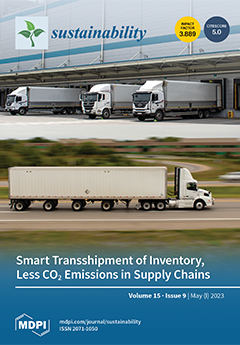Open AccessArticle
Assessing the Spatio-Temporal Dynamics of Land Use Carbon Emissions and Multiple Driving Factors in the Guanzhong Area of Shaanxi Province
by
Yali Wang, Yangyang Liu, Zijun Wang, Yan Zhang, Bo Fang, Shengnan Jiang, Yijia Yang, Zhongming Wen, Wei Zhang, Zhixin Zhang, Ziqi Lin, Peidong Han and Wenjie Yang
Viewed by 1464
Abstract
Land use change is one of the key elements leading to carbon emission changes, and is of great significance to the process of achieving the goals of carbon peaking and carbon neutrality. In this study, we calculated the land-use carbon emissions (LCE) in
[...] Read more.
Land use change is one of the key elements leading to carbon emission changes, and is of great significance to the process of achieving the goals of carbon peaking and carbon neutrality. In this study, we calculated the land-use carbon emissions (LCE) in the Guanzhong area (GZA) of Shaanxi province from 2000 to 2019 by using an improved LCE measurement model. Meanwhile, the spatial and temporal changes of LCE were analyzed and the driving forces were investigated based on the correlation analysis and multi-scale geographical weighting regression (MGWR). The results showed that the total amount of LCE showed a significant increasing trend from 2000 to 2019. Regions where the LCE significantly increased occupied 71.20% of the total area; these regions were distributed in the central and eastern parts of the study area. The LCE showed a significant positive spatial correlation and had a remarkable aggregation state. The H-H agglomeration area of LCE was distributed in the central urban agglomeration. The L-L agglomeration areas were always distributed in the southwest part of the GZA with low carbon emissions. The average correlation coefficients between LCE and nighttime light (NTL), population density (PD), and gross primary productivity (GPP) were 0.13, 0.21, and −0.05, respectively. The NLT and PD had obvious positive effects on LCE, while GPP has obvious negative effects on carbon emissions, which can be ascribed to the carbon sink effect of forests and grasslands. The results of this study have important reference value regarding the formulation of carbon emission reduction policies and the development of a low-carbon social economy.
Full article
►▼
Show Figures





